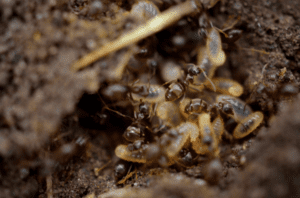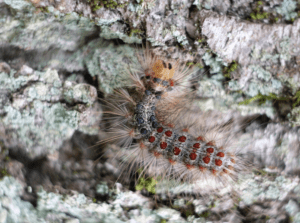
Bees play a vital role in our ecosystem, but their stings can be painful and sometimes dangerous. Knowing how to properly remove a bee stinger and treat a sting at home is essential for quick relief and preventing complications. Whether you’re enjoying time outdoors or dealing with an unexpected sting, taking the right steps can make all the difference. At Twin Boro, we prioritize safety for kids and pets in pest control, ensuring that your home remains a safe, sting-free environment. Read on for expert tips on bee sting treatment and prevention.
Why Do Bees Sting?
Bees sting primarily as a defense mechanism to protect themselves or their colony from perceived threats. When a bee feels threatened-whether by a predator, a human, or another disturbance-it uses its stinger to inject venom into the target. This venom causes pain and inflammation, deterring the attacker and giving the bee or its hive a chance to survive.
The stinger of a honeybee is a barbed structure connected to a venom sac. When the bee stings, it drives the stinger into the skin of the threat. Because of the barbs, the stinger becomes lodged in the skin, making it difficult for the bee to pull it back out. As the bee tries to fly away, the stinger, venom sac, and parts of its digestive tract, muscles, and nerves are torn from its abdomen. This traumatic injury is fatal to the honeybee, and it dies shortly afterward. Interestingly, not all bees die after stinging. Honeybees are unique in this way due to their barbed stingers and the relatively thick skin of mammals. Other bee species, like bumblebees, have smoother stingers that can be used multiple times without harming the bee. Nevertheless, most bees will sting only when absolutely necessary, as it is often their last line of defense.
How to Remove a Bee Stinger Safely
If you've been stung by a bee, it's important to remove the stinger quickly and safely to minimize venom exposure and reduce irritation. Here’s a step-by-step guide using common household items:
- Stay calm – Avoid panicking or squeezing the area, as this may worsen venom spread.
- Locate the stinger – You’ll often see a small black dot (the stinger) at the center of the sting site, sometimes with a venom sac attached.
- Do NOT pinch or squeeze – Using fingers or tweezers to grab the stinger can unintentionally squeeze more venom into the skin.
- Use a credit card or firm object – Take a credit card, butter knife, or similar flat-edged tool. Hold it at a shallow angle against the skin.
- Scrape gently – Push or scrape the edge of the card firmly but gently across the skin, moving underneath the stinger to lift it out without squeezing.
- Clean the area – Once the stinger is out, wash the site with soap and water to prevent infection.
- Apply a cold compress – Reduce swelling and pain by holding a cold pack or ice wrapped in cloth to the area.
- Monitor for allergic reactions – Watch for severe swelling, difficulty breathing, or hives, and seek medical attention if necessary.
Home Remedies for Treating a Bee Sting
After removing the bee stinger, there are several effective at-home treatments that can help soothe pain, reduce swelling, and prevent further irritation. One of the simplest remedies is applying an ice pack or a cold compress to the sting site. The cold helps numb the area and minimize swelling. It's best to wrap the ice in a cloth rather than placing it directly on the skin to avoid frostbite. Another common treatment is creating a paste using baking soda and water. This mixture can be applied directly to the sting to help neutralize the bee venom and relieve itching or discomfort. Additionally, natural remedies like honey or aloe vera gel may soothe the skin due to their anti-inflammatory and antibacterial properties.
Over-the-counter medications can also be helpful. Taking an antihistamine, such as diphenhydramine (Benadryl), can reduce allergic reactions like itching, redness, or hives. For pain and inflammation, an over-the-counter pain reliever like ibuprofen or acetaminophen may provide relief. Applying hydrocortisone cream to the sting site can further reduce itching and swelling. It's important to monitor the sting area for any signs of infection or a more serious allergic reaction and seek medical help if symptoms worsen.
When to Seek Medical Attention
While most bee stings cause mild symptoms like localized pain, swelling, and redness, some individuals may experience a severe allergic reaction known as anaphylaxis. Anaphylaxis is a life-threatening condition that requires immediate medical attention. Common symptoms include widespread hives or rash, intense swelling beyond the sting site (often affecting the face, lips, tongue, or throat), difficulty breathing, wheezing, or tightness in the chest. The person may also experience dizziness, lightheadedness, a rapid or weak pulse, nausea, vomiting, or even fainting. In some cases, a drop in blood pressure can lead to shock.
These symptoms typically appear within minutes of being stung, although they can occasionally be delayed. Anyone showing signs of trouble breathing, swelling of the throat or tongue, or who feels faint or confused should seek emergency medical care immediately. Using an epinephrine auto-injector, such as an EpiPen, if available, can help counteract the reaction while waiting for professional help to arrive. Even if symptoms improve after using epinephrine, it is still essential to go to the hospital, as further treatment and monitoring are necessary. Quick action is critical to prevent severe complications or death in cases of anaphylaxis.
How to Prevent Bee Stings in the Future
Avoiding bee stings involves taking simple precautions, especially when spending time outdoors. Bees are often attracted to bright colors and floral patterns, so wearing light-colored, solid clothing can help reduce your chances of attracting them. Dark colors like black and blue are particularly attractive to bees, so it’s best to avoid them. Bees are also drawn to strong scents, including perfumes, lotions, or sweet-smelling shampoos. To stay safe, it's wise to avoid wearing heavily scented products when outside. Using natural bee repellents can also be helpful. Essential oils like peppermint, citronella, eucalyptus, and lemongrass are known to repel bees. You can apply these oils to your skin or diffuse them around outdoor areas. Keeping food and sugary drinks covered when outside, especially in gardens or parks, is another key tip, as the smell of sweet substances can attract bees. Taking these steps can significantly reduce the risk of bee stings.
Staying calm around bees is crucial. If a bee approaches you, avoid swatting at it or making quick, jerky movements, as this can provoke the bee. Instead, stay still and gently move away from the area. Bees are more likely to sting when they feel threatened, so remaining composed helps prevent a defensive response.
Sting-Free Living: Be Prepared and Stay Safe
Quick stinger removal and proper treatment are crucial in reducing the discomfort and potential dangers associated with bee stings. The longer a stinger remains embedded in the skin, the more venom is injected, leading to increased pain, swelling, and irritation. By quickly removing the stinger- using a scraping motion with a credit card or similar object- one can minimize the spread of venom. Afterward, treating the sting site with ice, baking soda, or antihistamines can help reduce swelling and pain.
In cases of severe allergic reactions, such as anaphylaxis, immediate medical attention is essential. Recognizing the symptoms of a serious reaction, including difficulty breathing or swelling in the throat, can save lives. It’s important to stay calm and act quickly by using an epinephrine auto-injector, if available, and seeking emergency care.
To prevent bee stings in the first place, it’s important to take precautions, such as wearing light-colored clothing, staying calm around bees, and avoiding strong scents. If you encounter a bee nest or hive near your home, consider contacting Twin-Boro for professional help. For issues related to bees or other pests, commercial and residential pest control services can safely and effectively address the problem. If you need assistance, don’t hesitate to contact us for expert advice and services.






